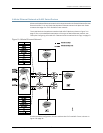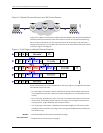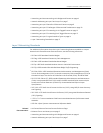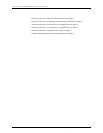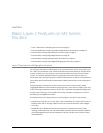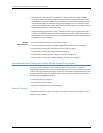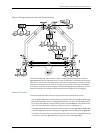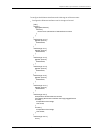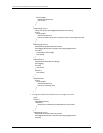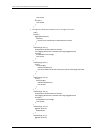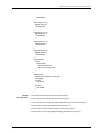
•
Spanning Tree Protocols (xSTP, where the “x” represents the STP type)—Bridges
function by associating a MAC address with an interface, similar to the way a router
associates an IP network address with a next-hop interface. Just as routing protocols
use packets to detect and prevent routing loops, bridges use xSTP frames to detect
and prevent bridging loops. (Layer 2 loops are more devastating to a network because
of the broadcast nature of Ethernet LANs.)
•
Integrated bridging and routing (IRB)—Support for both Layer 2 bridging and Layer 3
routing on the same interface. Frames are bridged if they are not sent to the router's
MAC address. Frames sent to the router's MAC address are routed to other interfaces
configured for Layer 3 routing.
Related
Documentation
MX Series Ethernet Services Routers Solutions Page•
• Example Roadmap: Configuring a Basic Bridge Domain Environment on page 22
• Example Step: Configuring Interfaces and VLAN Tags on page 24
• Example Step: Configuring Bridge Domains on page 30
• Example Step: Configuring Spanning Tree Protocols on page 32
• Example Step: Configuring Integrated Bridging and Routing on page 34
Example Roadmap: Configuring a Basic Bridge Domain Environment
Configuring Layer 2 features on MX Series routers can vary from the very simple
(aggregated Ethernet trunk interfaces, spanning trees), to the more complex (inner and
outer VLAN tags, broadcast domains), to the very complicated (integrated bridging and
routing, Layer 2 filtering). This example offers a fairly complex configuration for Layer 2
processing in a bridged environment.
•
Example Topology on page 22
•
Example Scenario on page 23
•
Example Configuration Summary on page 24
Example Topology
Consider the network in Figure 5 on page 23. The figure shows three MX Series routers
acting as Layer 2 devices.
Copyright © 2010, Juniper Networks, Inc.22
Junos 10.4 MX Series Ethernet Services Routers Solutions Guide




